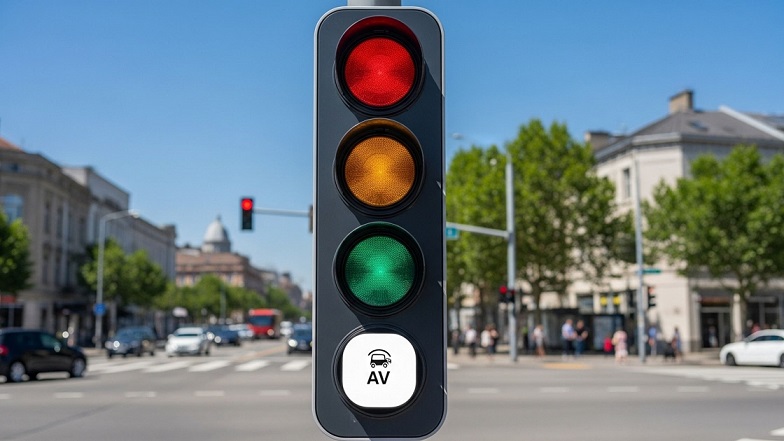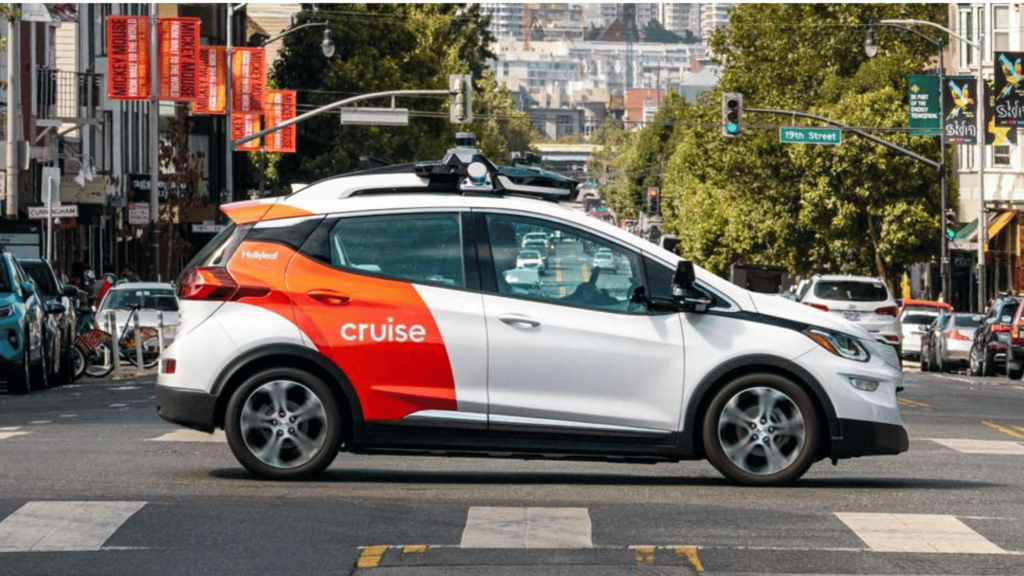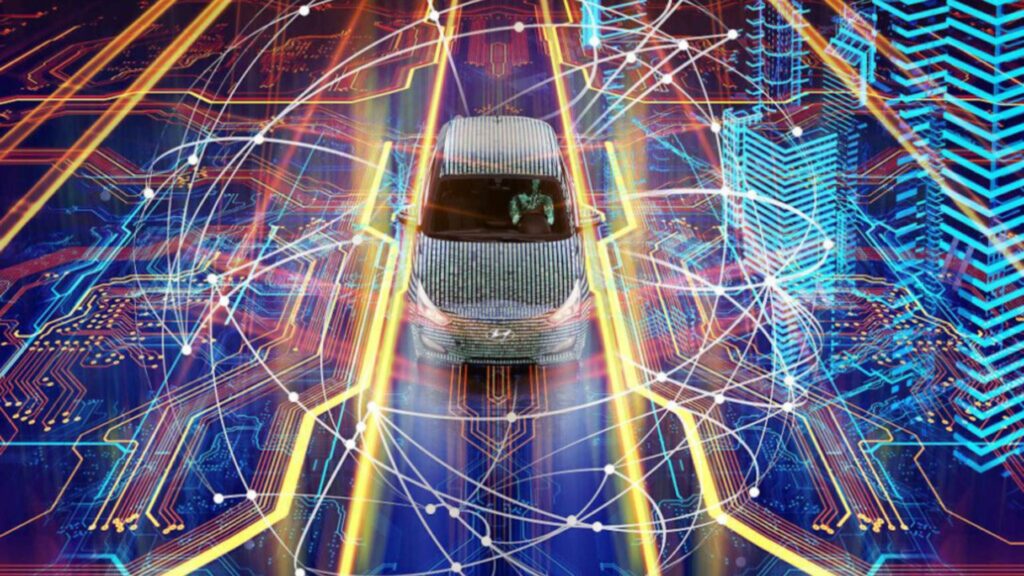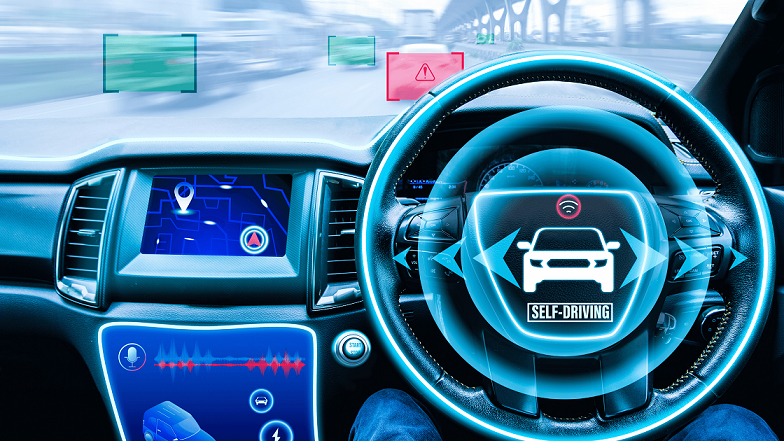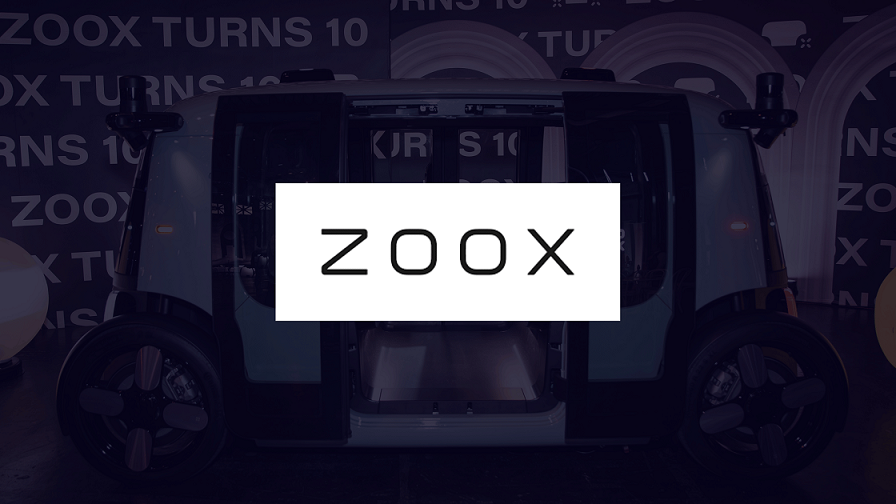The familiar red, yellow, and green traffic light system that has guided drivers for over a century may soon undergo its most significant transformation. Researchers at North Carolina State University are proposing the addition of a fourth light—white—specifically designed to accommodate the growing presence of autonomous vehicles on our roads.
Understanding the Fourth Light Concept
The proposed white light changes how traffic lights communicate with drivers. Rather than replacing what’s already on ground, this new light would serve as an intelligent indicator that autonomous vehicles have assumed control of intersection traffic flow.
The white light would signal that connected autonomous vehicles are coordinating traffic movements through vehicle-to-infrastructure (V2I) communication. When activated, human drivers would simply follow the lead of autonomous vehicles ahead of them, which are optimizing traffic flow through real-time data exchange with traffic control systems.
According to Dr. Ali Hajbabaie, associate professor of civil, construction and environmental engineering at NC State and co-author of the research, “The white phase concept would really be an important addition to our current traffic signals.” The research team published their findings in IEEE Transactions on Intelligent Transportation Systems, outlining how this system could revolutionize urban mobility.
The Technology Behind the Innovation
The proposed system will use distributed computing and vehicle-to-everything (V2X) communication technology, creating a sophisticated network where vehicles and infrastructure share real-time information. Here’s the operational framework:
How the White Light System Functions
Autonomous vehicle approach: Multiple self-driving cars equipped with communication technology approach an intersection
Data transmission: Vehicles continuously send information about speed, position, trajectory, and intended direction to the traffic signal
Threshold assessment: The traffic management system calculates whether sufficient autonomous vehicles are present to optimize flow
White light activation: When autonomous vehicle density reaches the predetermined threshold, the white light comes on
Human driver response: Conventional drivers follow the autonomous vehicles
Dynamic adjustment: As autonomous vehicle concentration decreases below the threshold, the system reverts to traditional red-yellow-green signals
The system is both flexible and feasible.
As Hajbabaie explained,
“Red, yellow and green lights would still be used for human drivers. But when there are enough autonomous vehicles at an intersection, the white light would be used to tell human drivers to simply follow the car in front of them.”
You May Also Like:
Driverless Technology: Key Components of Autonomous Vehicles (A Complete Teardown)
Understanding ADAS in Autonomous Vehicles and How It Works (Definitive Guide)
Quantifiable Benefits
The research team conducted extensive computer simulations to measure the potential impact of white light implementation. The results were striking: even with just 10% autonomous vehicle penetration, delays at intersections could be reduced by approximately 3%.
More impressively, the study found that in scenarios where autonomous vehicles comprise the majority of traffic, delays could plummet by up to 94%. These reductions translate directly into multiple benefits:
- Decreased fuel consumption: Less idling time means vehicles burn significantly less fuel
- Lower emissions: Reduced stop-and-go traffic decreases harmful pollutant release
- Time savings: Commuters spend less time waiting at intersections
- Improved traffic throughput: More vehicles can pass through intersections in the same timeframe
“Driver compliance with the white phase is likely to be particularly high during rush hours, when the negative impact of congestion is highest,” the researchers noted in their paper. This suggests the system would be most effective precisely when it’s needed most.
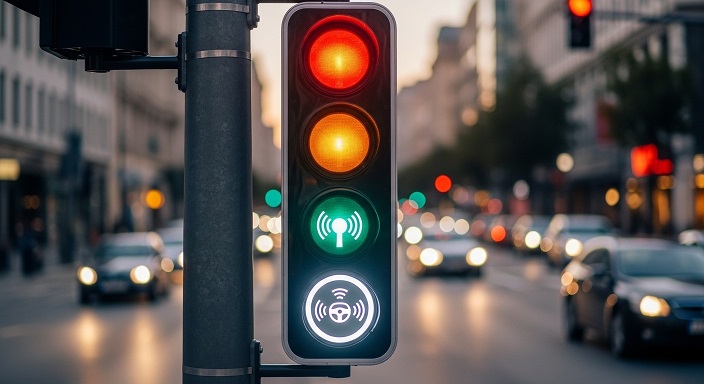
Initial Testing Environments
NC State researchers are taking a methodical approach to implementing this technology, beginning with controlled environments before expanding to public roads.
Port Facilities: The Ideal Testing Ground
Ports represent optimal initial testing locations for several compelling reasons:
- High vehicle density with predictable, repetitive movement patterns
- Minimal pedestrian traffic, reducing complexity and safety concerns
- Existing autonomous vehicle operations in many modern port facilities
- Controlled access environments that simplify data collection and analysis
“Port facilities provide an excellent testbed because they already use autonomous vehicles for moving cargo, and the traffic patterns are highly structured,” noted transportation technology experts reviewing the research.
Beyond ports, the researchers envision gradual expansion to:
- University campuses with dedicated autonomous shuttle services
- Planned communities incorporating smart city infrastructure
- Industrial complexes with automated logistics systems
- Eventually, urban intersections in cities with high autonomous vehicle adoption
Flexibility in Color Choice and Design
While the research specifically proposes white as the fourth traffic light color, the scientists emphasize that the exact hue isn’t set in stone. The critical requirement is that the additional light be distinctive, easily recognizable, and clearly differentiable from existing signals.
Alternative colors under consideration include:
- Cyan or light blue, which wouldn’t be confused with existing signals
- Purple or magenta, offering high visibility and uniqueness
- Any color that maintains clear visibility in various weather and lighting conditions
The research team stressed that standardization would be essential. Once implemented, the chosen color would need to be universal across all jurisdictions to avoid driver confusion.
Addressing Safety and Driver Education Concerns
Any modification to traffic signals raises legitimate safety questions. The NC State team has built several safeguards into their proposal:
The system maintains traditional signals as a fallback. If autonomous vehicle density drops, communication fails, or any system error occurs, lights immediately revert to conventional red-yellow-green operation.
Human drivers require minimal behavioral changes. The white light essentially instructs drivers to do what many already do naturally: follow the vehicle ahead. This simplicity could lead to rapid adoption.
The transition would be gradual. As autonomous vehicle penetration increases over years or decades, drivers would slowly become accustomed to occasionally seeing the white light at certain intersections.
Transportation safety expert Dr. Madhav Chitturi, who was not involved in the research, commented:
“Any change to traffic control devices requires extensive testing and public education, but the concept is elegant in its simplicity. By leveraging the optimization capabilities of autonomous vehicles while maintaining familiar signals for human drivers, it creates a bridge technology for our transition period.”
The Broader Context: Autonomous Vehicle Adoption
This traffic light innovation arrives as autonomous vehicle technology continues advancing. According to market research firm Allied Market Research, the global autonomous vehicle market was valued at $76.13 billion in 2022 and is projected to reach $2,353.93 billion by 2032, growing at a compound annual growth rate of 40.2%.
Current autonomous vehicle deployment includes:
- Waymo operating fully autonomous ride-hailing services in Phoenix, San Francisco, Austin, Atlanta, and Los Angeles
- Zoox offering fully autonomous rides in Las Vegas
- Numerous pilot programs for autonomous shuttles in controlled environments
- Major automakers like Tesla, GM, Ford, and Mercedes-Benz advancing driver assistance systems
However, the transition to widespread autonomous vehicle adoption will take decades. Industry analysts estimate that by 2030, autonomous vehicles may represent only 5-10% of vehicles on the road. This mixed-traffic reality—where autonomous and human-driven vehicles share roads—is precisely why innovations like the white light system are necessary.
International Perspectives and Similar Initiatives
The United States isn’t alone in exploring smart traffic management for autonomous vehicles. Several countries are pursuing complementary approaches:
China has launched multiple “smart city” initiatives incorporating AI-powered traffic management in cities like Hangzhou and Beijing, where algorithms adjust signal timing in real-time based on traffic flow.
Singapore has implemented an extensive network of sensors and cameras for dynamic traffic management, creating an infrastructure foundation compatible with autonomous vehicles.
The European Union has invested heavily in Cooperative Intelligent Transport Systems (C-ITS), which facilitate communication between vehicles and infrastructure across member states.
These international efforts suggest a global shift towards intelligent transportation systems that can accommodate both autonomous and human-driven vehicles.
Conclusion
The proposed white traffic signals the transition period between human-driven and autonomous transportation—a bridge technology that allows both to coexist efficiently.
Autonomous vehicles are slowly taking over our roads, therefore, traffic management systems must evolve accordingly. The white light concept offers an interesting solution.
Whether the fourth light ultimately appears white, cyan, or another distinctive color, its purpose remains clear—to create safer, faster, and more efficient roadways for everyone. As we march towards full autonomy, innovations like this will prove essential.
The traffic lights that have guided drivers since 1914 are preparing for their most significant upgrade yet, ushering in a new era where human intuition and artificial intelligence collaborate to keep traffic moving smoothly into the future.
Also Read:
Top 20 US Autonomous Vehicle Companies (2025)
Top 5 Autonomous Trucking Companies in the US (2025)
10 Best Self-Driving Electric Cars for 2025
6 Best Self-Driving Cars in the US (2025)

I’m Dr. Brandial Bright, also known as the AVangelist. As a dedicated and passionate researcher in autonomous and electric vehicles (AVs and EVs), my mission is to educate and raise awareness within the automotive industry. As the Founder and Managing Partner of Fifth Level Consulting, I promote the adoption and innovation of advanced vehicle technologies through speaking engagements, consulting, and research as we progress to level 5 fully autonomous vehicles.

